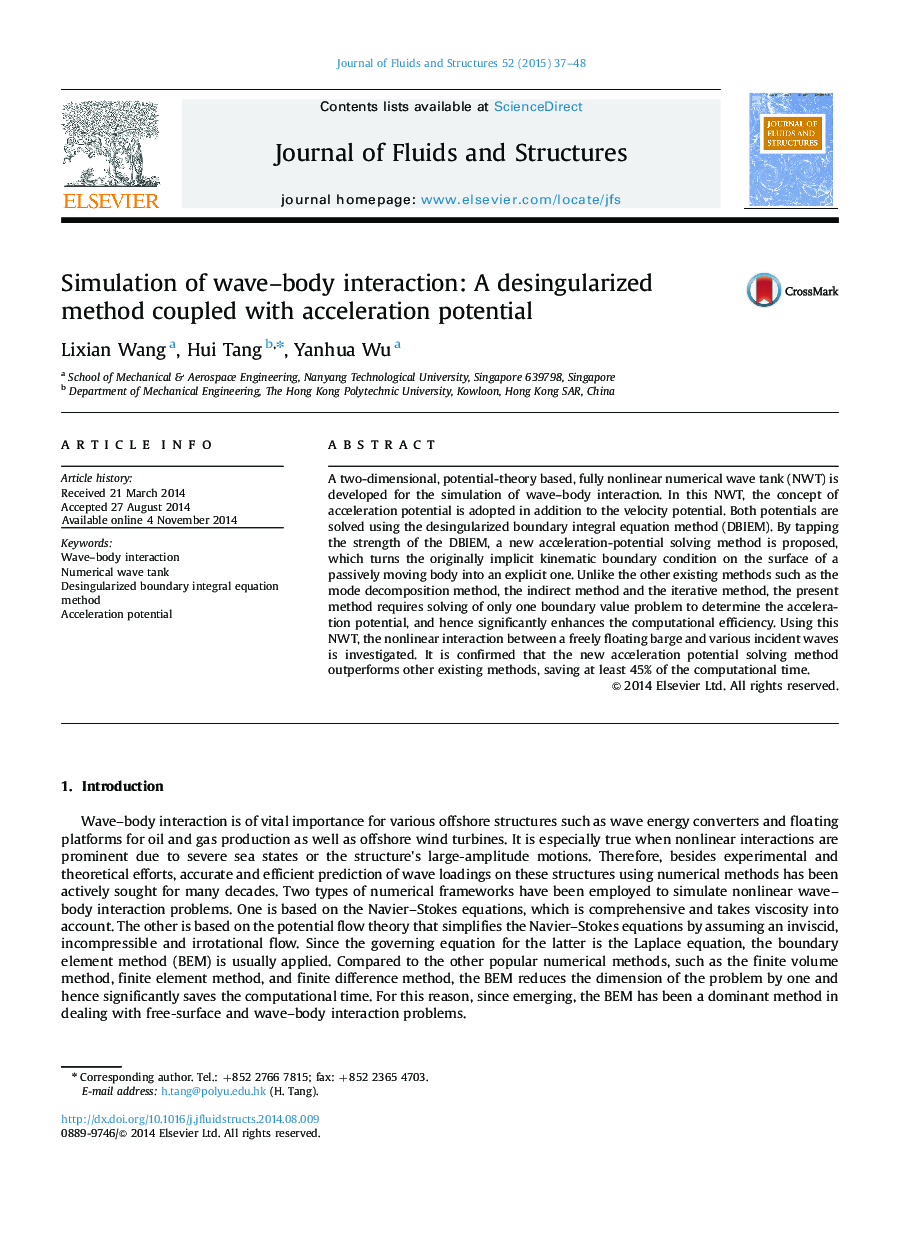| Article ID | Journal | Published Year | Pages | File Type |
|---|---|---|---|---|
| 7176019 | Journal of Fluids and Structures | 2015 | 12 Pages |
Abstract
A two-dimensional, potential-theory based, fully nonlinear numerical wave tank (NWT) is developed for the simulation of wave-body interaction. In this NWT, the concept of acceleration potential is adopted in addition to the velocity potential. Both potentials are solved using the desingularized boundary integral equation method (DBIEM). By tapping the strength of the DBIEM, a new acceleration-potential solving method is proposed, which turns the originally implicit kinematic boundary condition on the surface of a passively moving body into an explicit one. Unlike the other existing methods such as the mode decomposition method, the indirect method and the iterative method, the present method requires solving of only one boundary value problem to determine the acceleration potential, and hence significantly enhances the computational efficiency. Using this NWT, the nonlinear interaction between a freely floating barge and various incident waves is investigated. It is confirmed that the new acceleration potential solving method outperforms other existing methods, saving at least 45% of the computational time.
Related Topics
Physical Sciences and Engineering
Engineering
Mechanical Engineering
Authors
Lixian Wang, Hui Tang, Yanhua Wu,
